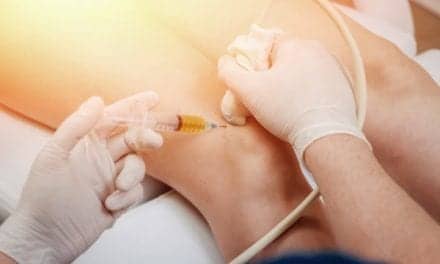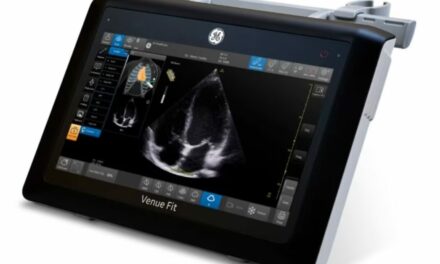While ultrasound imaging technology has been available for more than 50 years, machine size and cost limited its reach to medical offices and hospitals. However, relatively recent advances in this technology has allowed for the development of ultra-portable handheld devices that appear more like the tricorder from Star Trek than a traditional ultrasound machine.
These devices hold high promise in many areas of medicine but are especially promising for uses such as monitoring heart failure and pneumonia in geriatric populations that have difficulties with mobility or remain entirely housebound.
But when any kind of innovative technology is adopted into the medical community, appropriate training to ensure diagnostic accuracy and safety is essential. A recent trial showed that a short training course—which was made even shorter when it was concluded due to the encroachment of the COVID-19 outbreak—dramatically increased the confidence of four geriatricians in their ability to use the devices and interpret images they got from them. Findings from a study of the approach by Penn Medicine researchers were published recently in the Journal of the American Geriatrics Society.
“With ultrasound devices like these being handheld, they can fit in your pocket, so it’s always available to doctors, like a stethoscope,” says the study’s lead author, Daniel Kim, MD, a fellow in geriatric medicine in the Perelman School of Medicine at the University of Pennsylvania in Philadelphia. “But physicians must be confident in their ability to use the technology, which means knowing the clinical indications for its usage and how to position the device to obtain adequate images and interpret them afterwards.”
Geriatric patients disproportionally face barriers to care because of their serious medical conditions and transportation challenges. Ultra-portable handheld devices, called point-of-care-ultrasound (POCUS) devices, allow for them to be carried to places like nursing homes or even homes, bringing evaluation and the potential for care directly to patients. For instance, doctors or other health professionals may use handheld devices for fluid volume assessment, often related to heart failure, as well as checking for urinary retention, pneumonia, and lower extremity blood clots, which are all common among older adults.
Currently, there are training curriculums for emergency medicine physicians and trauma surgeons to learn to use these devices, but courses for geriatricians have not been established. As such, Kim and his coauthors created one, which included a hands-on workshop, to train the doctors working regularly with older populations. They tested it among four different fellows in geriatric medicine who considered themselves novice users at the start.
After Kim’s four-hour ultrasound training workshop, the four geriatric medicine fellows’ overall comfort and confidence in both using the POCUS device and interpreting the images doubled. By the end of the extended curriculum, which included about an hour of supervised scanning on patients each week, that comfort level almost tripled. These gains were roughly similar along three of the four separate areas of focus that the course covered (bladder, lungs, and internal jugular).
There was a difference when it came to the assessment of the heart. Confidence in using the device did increase dramatically, and continued to do so after the workshop, albeit at a much shallower rate than the other areas of focus. But confidence in the interpretation of images of the heart actually declined somewhat.
“A decline in confidence in heart ultrasound image interpretation after a brief training course is not uncommon,” says senior author Nova Panebianco, MD, an associate professor of emergency medicine and emergency ultrasound fellowship director. “Cardiac ultrasound is so complex that even cardiologists sometimes obtain additional fellowship training in the subject. I suspect that, with training, the geriatric fellows realized how much more there is to know.”
These high gains in confidence were remarkable because they came quickly. The workshop was held on the first day of the curriculum, Jan. 18, 2020. While scheduled to run for six months, the curriculum was only able to continue into March due to COVID-19’s outbreak. It was then suspended because a large part of the training centered on doing supervised scans, which was not possible amid social distancing. But the doctors had already gained a significant working knowledge of performing exams through the POCUS devices by then.
Kim hopes to develop new methods for teaching the use of this device among older populations and expand the training to geriatric fellows from nearby health systems. “We want to organize a virtual ultrasound webinar workshop and teach others to use a similar model for instruction,” Kim says. “We hope that the more people we can get in geriatrics to feel comfortable with this, the more scans we’ll be able to do on people who would never have otherwise gotten them.”






